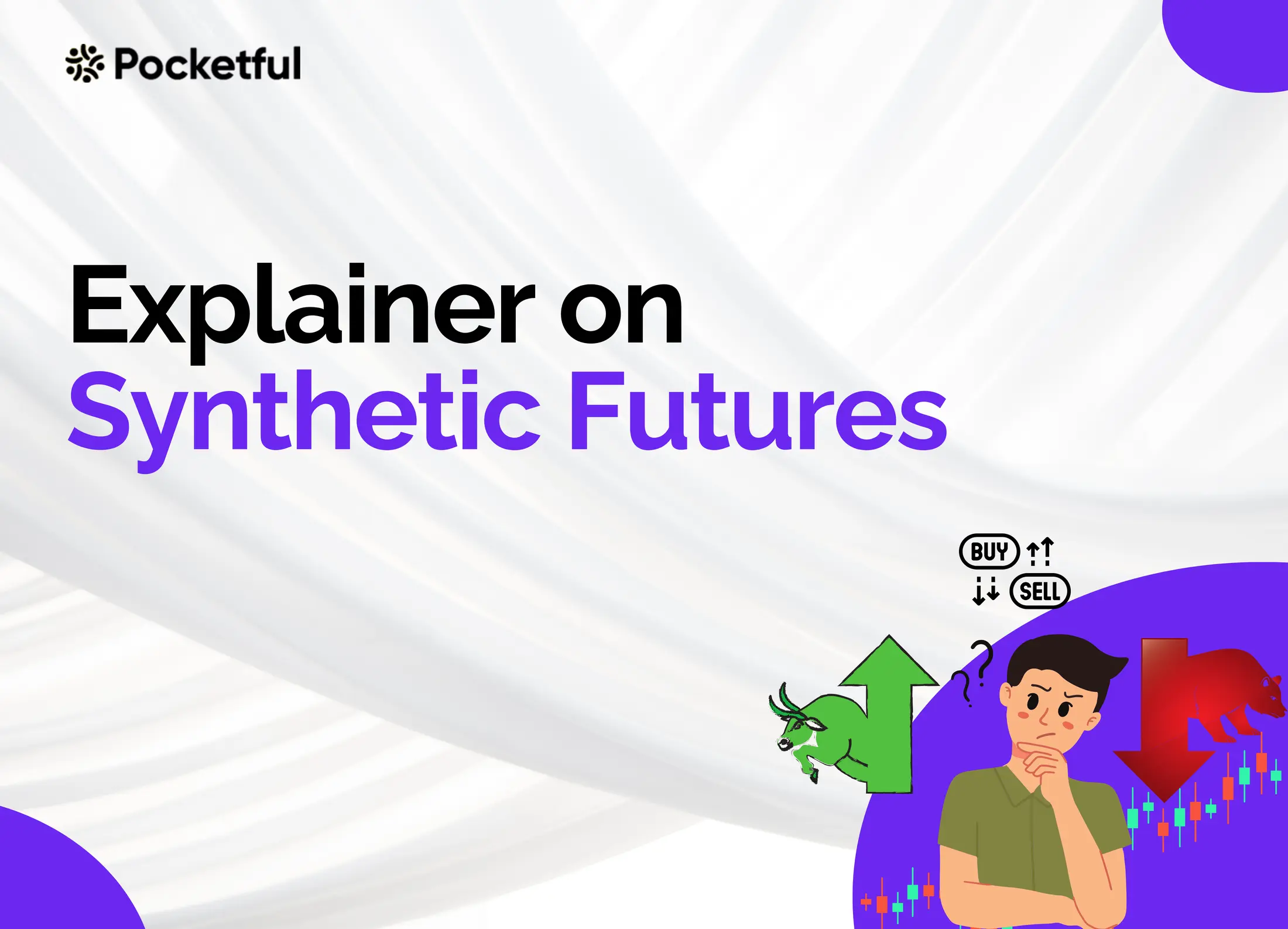| Type | Description | Contributor | Date |
|---|---|---|---|
| Post created | Pocketful Team | Jun-07-24 | |
| Add new links | Nisha | Mar-12-25 |
Read Next
- What is a Harami Candlestick Pattern?
- What is Average Traded Price in Stock Market
- What is MIS in Share Market?
- 7 Common Mistakes in Commodity Trading New Traders Must Avoid
- Brokerage Charges in India: Explained
- What is a BTST Trade?
- How to Do Algo Trading in India?
- What Is CMP in Stock Market?
- MTF Pledge vs Margin Pledge – Know the Differences
- Physical Settlement in Futures and Options
- List of Best Commodity ETFs in India
- Bullish Options Trading Strategies Explained for Beginners
- Best Brokers Offering Free Trading APIs in India
- Top Discount Brokers in India
- Best Charting Software for Trading in India
- Benefits of Intraday Trading
- What are Exchange Traded Derivatives?
- What is Margin Shortfall?
- What is Central Pivot Range (CPR) In Trading?
- Benefits of Algo Trading in India
- Blog
- synthetic futures
Synthetic Futures – Definition, Risk, Advantages, Example

Did you know that you can create a payoff similar to a futures contract using call and put options? We are talking about Synthetic Futures, one of the least discussed topics in options trading. Let’s have a deep dive into it.
What are the Synthetic Futures?
A synthetic future contract is a financial instrument that replicates the payoff of a traditional futures contract using other financial instruments such as options, swaps, or contracts for difference (CFDs). However, traders generally use options to create synthetic futures.
In synthetic futures option version, we use options (call and put options) to replicate the payoff of a futures contract. For example, an investor buys a call option and sells a put option of same expiration date for a long synthetic future. And for a synthetic short future, the positions are reversed.
The purpose of doing this is to replicate the payoff of the futures contract (without owning a physical asset) and or to bypass/reduce the limitations/risks associated with trading actual futures contracts.
Risks associated with Synthetic Futures

- Liquidity Risk: Traders can face difficulty in executing and exiting synthetic future trades because of limited liquidity available, particularly in stock-specific contracts. Further, a higher bid-ask spread can reduce the profits.
- Regulatory Restrictions: The use of synthetic futures contracts may be subject to regulatory compliance and restrictions in certain jurisdictions. Investors should be aware of the applicable laws and regulations governing these contracts in their respective countries.
- Counterparty Risk: If you’re trading in Over the counter (OTM) markets, synthetic futures may involve counterparty risk, there is a risk of default or non-performance by any of the involved parties. It is crucial for investors to assess the creditworthiness and reliability of the counterparties before entering into synthetic positions.
Benefits of Synthetic Futures
- Lower Margin Requirements: One of the key advantages of synthetic futures contracts is that they often require lower margins compared to traditional future contracts.
- Flexibility and Customization: Synthetic future contracts enable investors to speculate on the various asset classes, including commodities, currencies, indices, and even individual stocks. Also, it allows traders to do certain adjustments using call and put options which is absent in future contracts.
- Cost Efficient: The ability to make adjustments in the underlying asset helps in saving a lot of money.
- Potential for Enhanced Returns: Due to the lower capital requirements and the ability to leverage derivative instruments, synthetic futures contracts offer the potential for enhanced returns.
Read Also: Momentum Investing: Meaning, History, Types & Advantages
Example

Consider that Berger paints is trading at INR 500. And a trader purchases a call option of ATM strike price, i.e., 500 strike for INR 50. This call option gives the trader the right, but not the obligation, to buy Berger Paints stock.
Simultaneously, the trader sells a put option of 500 (ATM strike) for INR 30, with the same expiration date.
By doing this, the trader has effectively created a synthetic long futures contract on Berger Paints stock by combining these two options. Thus, he or she can profit from the price increase if the stock price rises above INR 500.
Based on the below formula, the net outflow of synthetic futures will be calculated as follows:
Net Cash Outflow = Call option – Put option = 50-30 = 20
Keep a note that we are buying the ATM Call Option and simultaneously selling the ATM Put Option. Further, the call and put options belong to the same underlying and same expiry. Synthetic Long mimics the payoff of the long futures contract. In case of short synthetic futures, we buy ATM Put Option and sell ATM Call Option of the same underlying and same expiry.
Let us consider a few expiry scenarios:
- Berger Paints stock expires at 400 (Below ATM)
- At 400, the 500 CE will expire worthless, hence we will lose call premium paid that is INR 50 but PE will have an intrinsic value of Max (Strike – Spot, 0), i.e., Max (500-400, 0) or 100 as we are short on this put option, we will lose the money from the premium, 30 – 100 = (70)
- Total payoff from the long Call and short Put position would be, -50 – 70 = (120). Here, we made a loss of INR 120.
- Stock expires at 500 (At ATM )
- If the market expires exactly at 500, then both the options will expire worthless. Hence, we will lose the premium paid for the call option option = 50. But we will be able to retain the premium for the PE option = 30.
- The net payoff from both the positions will be, 30-50 = (20). Here, we made a loss of INR 20.
- Stock expires at 600 (Above ATM)
- At 600, the 500 long CE would have an intrinsic value of 100, we would make, [Intrinsic value – Premium Paid] = 100 – 50 = +50. The 500 short PE would expire worthless; hence we get to retain the premium of INR 30.
- Total payoff would be = +50 + 30 = INR 80
We can conclude that the strategy makes money when the market moves higher and loses money when the market goes down, similar to futures. However, this does not necessarily mean that the payoff is similar to that of futures. To establish that the synthetic long payoff behaves similar to the futures, there should be a payoff symmetry around the breakeven point that is called linearity and then only it will behave like futures.
Read Also: What is Future Trading and How Does It Work?
Conclusion
Synthetic futures contracts have gained popularity in the financial markets as they provide investors with a unique tool to gain exposure to the underlying assets without actually owning them. These contracts are designed to replicate the price movement and characteristics of traditional futures contracts.
By replicating the characteristics of an actual Futures contract, Synthetic futures give flexibility, risk management and increased trading opportunities. However, it is essential to understand the risks involved and have a good understanding of options strategies with proper knowledge and skill.
FAQs
What is a Synthetic Futures?
A Synthetic Future is a financial instrument that mimics a futures contract’s characteristics and potential returns without having its limitations.
Can I create Synthetic Futures apart from Options?
Yes, it can be created using other financial instruments as well, like Swaps and CFDs.
What are the advantages of Synthetic Futures?
It provides alternative trading strategies and effective risk management tools.
What is one of the limitations of Synthetic Futures?
One of the limitations of Synthetic futures is the limited availability of certain synthetic instruments because of low volumes in call and put options.
Is Counterparty Risk involved in Synthetic Futures?
Counterparty risk is the risk of loss from a default of the counterparty. In case of OTC markets, it is a primary risk in synthetic futures and are subject to creditworthiness of the counterparty.
Disclaimer
The securities, funds, and strategies discussed in this blog are provided for informational purposes only. They do not represent endorsements or recommendations. Investors should conduct their own research and seek professional advice before making any investment decisions.
Article History
Table of Contents
Toggle